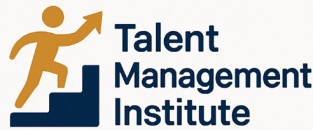Understanding the Core of HR Talent Management
Talent management is like setting the foundation for a house. It forms the core of how organizations manage their most valued asset - their people. Companies that prioritize human resources have a competitive edge. But understanding how to effectively manage employee talent isn't just about filling seats; it's about nurturing those seats into powerhouses of performance and growth.
The Essence of Efficient HR Practices
Let's face it – talent management is a commitment. It's about aligning your company's goals with your workforce abilities. An effective management strategy requires a deep understanding of the skills and potential within your team. Sounds straightforward, right? But like any good soup, it's all about the right blend of ingredients, or in this case, employees.
Tapping into your workforce's inner potential demands a blend of intuition and data. Human resources need to take a hard look at individual employee performance and engagement. Do you have the right talent acquisition strategy? Are your management practices agile enough to adapt to changing business goals?
The Human Factor in Management Systems
It's not just about deploying a management system; it's about creating an environment where each individual feels their best work is not only possible but encouraged. Employee engagement and experience are crucial here. Think of them as the Netflix to your Blockbuster – without them, you're stuck in the past.
There are vibrant organizations where employees thrive because they feel valued. It's these businesses that have successfully woven human capital into the very fabric of their management strategy. They’re the ones getting employee development right, using data to ensure that the right skills are nurtured, at the right time, and for the right reason.
For more insights into the mastering the talent management process and ensuring your organization doesn't miss a beat, keep reading our upcoming sections.
Identifying and Nurturing High-Potential Employees
Recognizing Potential in Employees
Finding high-potential employees in your company can feel like uncovering hidden gems. These are the people who show exceptional drive, adaptability, and leadership potential. But how do you spot them? Look out for those who constantly improve their skills, take on challenges eagerly, and consistently deliver strong performance. Engaging with employees and directly asking about their career goals can be revealing. This shows both interest and support for their personal and professional growth, enhancing employee experience. As a manager, understanding human resource principles, you can begin to align your management strategy to support these individuals.Nurturing the Growth of Promising Employees
Once identified, nurturing high-potential employees is crucial. Remember, they are your future leaders. Providing opportunities for them to stretch their skills can make a significant difference. This starts with crafting a solid employee development plan. Offering mentorship programs, encouraging participation in learning development workshops, or providing access to relevant training resources can really help. Equally, involving them in key projects or decision-making processes boosts their confidence and engagement. This process isn’t just about improving individual performance. It’s about building a robust talent management system that supports meaningful employee development across the organization. When employees feel valued and are allowed to grow, their connection with the company deepens.The Art of Feedback and Performance Management
Feedback is the lifeblood of improvement. Establishing a performance management practice where feedback is not just heard but acted upon is vital. Invest time in understanding each person's strengths and areas for growth, tailoring your input to drive their success. An effective strategy includes both regular informal conversations and structured performance reviews. This approach ensures continuous progress and aligns employee efforts with business goals. We all know that organizations thrive when their people do. By implementing these strategies, you can fuel a management system that not only supports the success of your current workforce but also ensures a steady pipeline of future leaders. For more insights, check out this article on mastering human resource and talent management strategies.Crafting Effective Talent Development Programs
Creating Meaningful Opportunities for Growth
Developing talent within an organization isn't about ticking boxes. It's about acknowledging that every employee has unique strengths and growth potential. To get the ball rolling, start by conducting a thorough skills assessment. This helps pinpoint where team members excel and where they can improve. By focusing on both, managers can create a more personalized approach to employee development. Remember that it's not just technical skills that need honing. Soft skills such as communication, teamwork, and problem-solving are equally vital. Offer workshops, seminars, or even online courses to help sharpen these skills. This provides employees with a broader toolkit to succeed, both individually and as part of a team.Encouraging a Culture of Continuous Learning
For a talent development program to truly thrive, fostering an organizational culture that values continuous learning is crucial. Encourage employees to take ownership of their growth by setting personal development goals. Provide them with the resources they need, like accessing up-to-date learning materials or enrolling in relevant courses. Incentives can motivate employees to push boundaries and strive for improvement. This could be in the form of recognition, additional responsibilities, or even promotions. Such initiatives demonstrate the company's commitment to individual and organizational growth, creating a win-win situation.Implementing a Structured Development Plan
Creating an effective talent development strategy requires a structured plan. Begin by setting clear, measurable goals for the development initiatives. These goals should align with the company's broader objectives, ensuring that everyone is moving in the same direction. Include regular feedback sessions to keep employees motivated and on track. Feedback should be constructive and geared towards growth rather than criticism. Additionally, consider using data-driven approaches. For example, track performance metrics to assess the effectiveness of the development programs. This not only provides valuable insights but also highlights areas for improvement. Explore real-world examples of talent management success in the industry. Check out this comprehensive resource on renowned talent managers who have made significant strides in nurturing employee growth and performance. By learning from the success stories of industry leaders, organizations can adapt and innovate their approach to talent development. Through a combination of meaningful opportunities, a pro-learning culture, and structured planning, organizations can set the stage for their employees to grow, flourish, and ultimately contribute even more to the business. With the right tools and mindset, companies not only enhance their workforce capabilities but also improve employee experience and retention, driving business success in the process.\nThe Role of Technology in Talent Management
Tech Takes Center Stage in Talent Management
Let's not beat around the bush: technology is reshaping how we handle talent management. From the way we scout potential hires to how we keep tabs on employee performance, tech has its fingerprints all over.
Imagine HR without tech—it’s like navigating a maze without a map. But with technology, businesses gain powerful tools and systems that streamline these processes. For example, what was once a complex task of managing employee data and performance becomes a piece of cake with state-of-the-art systems.
Connecting the Dots: Tech and Daily Operations
In practice, software solutions boost the organization’s game by offering analytics and insights that would otherwise be impossible to gather manually. Performance management systems gather data, allowing for a deeper understanding of an employee's work habits, strengths, and areas that need nurturing. This data-driven approach helps build a robust management strategy, ensuring high-potential employees are not left out in the cold.
Additionally, technology enhances the employee engagement interface, offering platforms where feedback loops flourish. Employees feel heard and understand how their feedback impacts the company's goals. Such platforms bridge communication gaps, strengthening the bonds between employee and company.
Remote Work and the Digital Touch
In this age of digital nomads, how do we keep the remote workforce feeling connected and involved? Enter technology again. Companies utilize communication tools to maintain seamless workflows. Software that supports collaborative workspaces can boost employee experience and ensure even those working from their kitchen tables feel like integral parts of the team.
These tools are not just a safety net—they are a lifeline for maintaining continuity in business operations. Organizations can meet their human capital demands without geographical limitations, expanding their talent acquisition reach far and wide.
Security Measures and Trust
But it’s not just about innovation. With great tech comes great responsibility. Protecting employee data within the management system is crucial. HR departments must ensure that these systems comply with data protection regulations, fostering trust and assurance among employees.
So, is your company maximizing technology's role in talent management? Because when properly harnessed, it's like having a dream team working behind the scenes, making sure your organization doesn't just grow, but thrives.
Strategies for Retaining Top Talent
Keeping the Best on Board
Retaining top talent is like holding onto the golden ticket for any company. It’s not just about keeping employees; it's about nurturing those who drive the company forward. So, how do you make sure your best people stick around?
Creating a Positive Employee Experience
First off, focus on the employee experience. Employees who feel valued and engaged are more likely to stay. This involves creating a supportive work environment where feedback is encouraged and growth opportunities are plentiful. Think about it: if your workplace feels like a second home, why would anyone want to leave?
Offering Competitive Benefits and Compensation
Let’s talk numbers. Competitive compensation and benefits packages are crucial. You can’t expect to keep top talent if they feel undervalued financially. But it’s not just about the paycheck. Consider offering benefits that enhance work-life balance, like flexible working hours or remote work options. These perks can be the deciding factor for many employees.
Opportunities for Growth and Development
People want to grow, and they want to do it within your company. Offering learning and development opportunities shows employees that you’re invested in their future. Whether it’s through mentorship programs or access to courses, helping employees develop new skills can boost their commitment to your organization.
Recognition and Rewards
Everyone likes a pat on the back. Recognizing and rewarding employee achievements is a simple yet effective strategy. Public acknowledgment of hard work can motivate employees to keep performing at their best. Consider setting up a reward system that celebrates milestones and accomplishments.
Building a Strong Company Culture
Lastly, a strong company culture can be a magnet for retaining talent. When employees feel like they’re part of something bigger, they’re more likely to stay. Foster a culture that aligns with your company’s values and goals, and watch as your workforce becomes more cohesive and dedicated.
Remember, retaining top talent is an ongoing process that requires effort from every level of the organization. By focusing on these areas, you can create an environment where employees not only want to stay but thrive.
Measuring the Success of Talent Management Initiatives
Evaluating Success in Talent Management
When it comes to talent management, measuring success isn't just about checking boxes. It's about understanding how well your strategies align with your company's goals and the impact they have on your workforce. Let's break it down.
Set Clear Goals and KPIs
First, establish what success looks like for your organization. Are you aiming for improved employee engagement, higher retention rates, or enhanced skills development? Define key performance indicators (KPIs) that align with these goals. For instance, if your goal is to retain top talent, track turnover rates and the reasons behind departures.
Utilize Data and Analytics
Data is your best friend in this process. Use analytics tools to gather insights on employee performance, engagement, and development. By analyzing trends and patterns, you can identify areas where your talent management strategies are thriving and where they need adjustment. This data-driven approach can help refine your strategies and improve outcomes.
Employee Feedback and Engagement
Don't underestimate the power of feedback. Regularly seek input from employees about their experiences and satisfaction with talent management initiatives. Surveys, focus groups, and one-on-one meetings can provide valuable insights into what's working and what needs improvement. Engaged employees are more likely to stay and contribute positively to the company.
Monitor Skill Development
Track the progress of skill development programs. Are employees acquiring the skills necessary for their roles and future opportunities? Measure the effectiveness of learning and development initiatives by evaluating improvements in performance and productivity. This not only helps in gauging success but also in identifying future training needs.
Review Succession Planning
Assess the effectiveness of your succession planning. Are you prepared for key personnel changes? Evaluate whether your organization has a strong pipeline of talent ready to step into critical roles. This not only ensures business continuity but also demonstrates the success of your talent management efforts.
Regular Strategy Reviews
Finally, regularly review and adjust your talent management strategies. The business world is always changing, and your strategies should evolve with it. By staying flexible and responsive, you can ensure that your talent management efforts continue to meet the needs of your organization and its people.
Measuring the success of talent management initiatives is a continuous process. By setting clear goals, leveraging data, and staying engaged with your workforce, you can create a thriving environment where both employees and the organization succeed.













